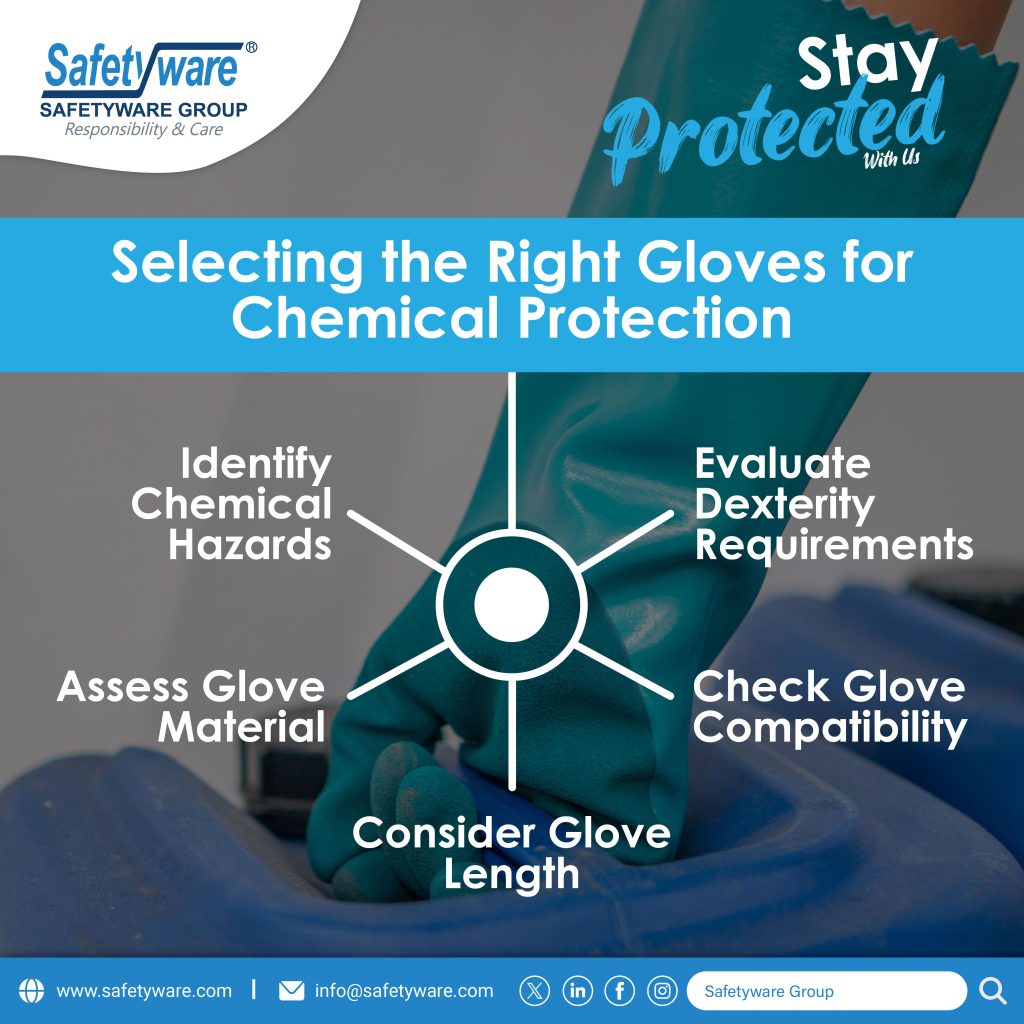Chemical processing and handling present unique safety and health challenges due to the potential risks associated with working with hazardous chemicals. Implementing effective Environmental, Health, and Safety (EHS) practices is crucial to protect workers, the environment, and the surrounding community. Here is a guide to key considerations for ensuring safety and health in chemical processing and handling:

1. Hazard Identification and Risk Assessment:
- Identify and assess potential hazards associated with chemicals used in processing and handling.
- Consider factors such as toxicity, flammability, reactivity, and exposure routes.
- Conduct regular risk assessments to evaluate and mitigate risks effectively.
2. Personal Protective Equipment (PPE):
- Provide appropriate PPE, including chemical-resistant gloves, goggles, face shields, aprons, and respiratory protection.
- Ensure that workers are trained in the proper use, maintenance, and disposal of PPE.
- Regularly inspect and replace damaged or worn-out PPE.
3. Chemical Storage and Handling:
- Store chemicals in designated areas with proper ventilation, temperature control, and segregation based on compatibility.
- Label all containers with clear and accurate information about the contents and associated hazards.
- Implement safe handling procedures, including proper lifting techniques and use of equipment like spill kits.
4. Emergency Preparedness and Response:
- Develop and communicate emergency response plans for chemical spills, leaks, fires, and other incidents.
- Conduct regular drills and training exercises to ensure that workers are prepared to respond effectively to emergencies.
- Maintain emergency response equipment, such as spill containment kits and eyewash stations.
5. Ventilation and Engineering Controls:
- Implement engineering controls, such as local exhaust ventilation systems, to minimize worker exposure to hazardous chemicals.
- Ensure that ventilation systems are properly maintained and functioning effectively.
- Monitor air quality regularly to detect and address any potential issues.
6. Training and Education:
- Provide comprehensive training on chemical hazards, safe handling practices, emergency procedures, and the proper use of PPE.
- Ensure that all workers, including contractors and temporary employees, receive adequate training before working with chemicals.
- Encourage ongoing education and awareness through regular safety meetings and refresher courses.
7. Regulatory Compliance:
- Stay informed about relevant regulations and standards governing chemical processing and handling, such as OSHA’s Hazard Communication Standard (HCS) and Process Safety Management (PSM) regulations.
- Conduct regular audits and inspections to ensure compliance with regulatory requirements.
- Maintain accurate records of chemical inventories, safety data sheets (SDS), and training documentation.
By prioritizing safety and health in chemical processing and handling, organizations can create a safer work environment, protect workers from harm, and prevent environmental incidents. Regular risk assessments, proper training, effective controls, and a strong safety culture are essential components of a successful EHS program in the chemical industry.
